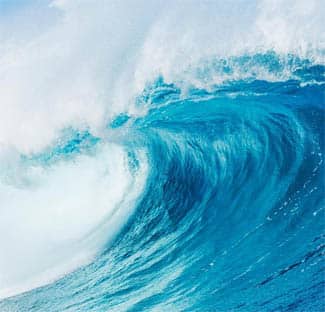
Heat trapped by greenhouse gases is raising ocean temperatures faster than previously thought, concludes an analysis of four recent ocean-heating observations. The results provide further evidence that earlier claims of a slowdown or “hiatus” in global warming over the past 15 years were unfounded.
“If you want to see where global warming is happening, look in our oceans,” said Zeke Hausfather, a graduate student in the Energy and Resources Group at UC Berkeley and co-author of the paper. “Ocean heating is a very important indicator of climate change, and we have robust evidence that it is warming more rapidly than we thought.”
Ocean heating is critical marker of climate change because an estimated 93 percent of the excess solar energy trapped by greenhouse gases accumulates in the world’s oceans. And, unlike surface temperatures, ocean temperatures are not affected by year-to-year variations caused by climate events like El Nino or volcanic eruptions.
The new analysis, to be published on January 11 in Science, shows that trends in ocean heat content match those predicted by leading climate change models, and that overall ocean warming is accelerating.
Assuming a “business-as-usual” scenario in which no effort has been made to reduce greenhouse gas emissions, the CMIP5 models predict that the temperature of the top 2,000 meters of the world’s oceans will rise 0.78 degrees Celsius by the end of the century. The thermal expansion caused by this bump in temperature would raise sea levels 30 centimeters, or around 12 inches, on top of the already significant sea level rise caused by melting glaciers and ice sheets. Warmer oceans also contribute to stronger storms, hurricanes and extreme precipitation.
“While 2018 will be the fourth warmest year on record on the surface, it will most certainly be the warmest year on record in the oceans, as was 2017 and 2016 before that,” said Hausfather, who has seen preliminary figures for 2018. “The global warming signal is a lot easier to detect if it is changing in the oceans than on the surface.”
The four studies, published between 2014 and 2017, provide better estimates of past trends in ocean heat content by correcting for discrepancies between different types of ocean temperature measurements and by better accounting for gaps in measurements over time or location.
“The Intergovernmental Panel on Climate Change’s (IPCC) Fifth Assessment Report, published in 2013, showed that leading climate change models seemed to predict a much faster increase in ocean heat content over the last 30 years than was seen in observations,” Hausfather said. “That was a problem, because of all things, that is one thing we really hope the models will get right.”
“The fact that these corrected records now do agree with climate models is encouraging in that is removes an area of big uncertainty that we previously had,” he said.
Deep divers
A fleet of nearly 4,000 floating robots drift throughout the world’s oceans, every few days diving to a depth of 2000 meters and measuring the ocean’s temperature, pH, salinity and other bits of information as they rise back up. This ocean-monitoring battalion, called Argo, has provided consistent and widespread data on ocean heat content since the mid-2000s.
Prior to Argo, ocean temperature data was sparse at best, relying on devices called expendable bathythermographs that sank to the depths only once, transmitting data on ocean temperature until settling into watery graves.
Three of the new studies included in the Science analysis calculated ocean heat content back to 1970 and before using new methods to correct for calibration errors and biases in the both the Argo and bathythermograph data. The fourth takes a completely different approach, using the fact that a warming ocean releases oxygen to the atmosphere to calculate ocean warming from changes in atmospheric oxygen concentrations, while accounting for other factors, like burning fossil fuels, that also change atmospheric oxygen levels.
“Scientists are continually working to improve how to interpret and analyze what was a fairly imperfect and limited set of data prior to the early 2000s,” Hausfather said. “These four new records that have been published in recent years seem to fix a lot of problems that were plaguing the old records, and now they seem to agree quite well with what the climate models have produced.”
(Adapted from an article by Kara Manke in Berkeley News, January 10, 2018)
| From “How fast are the oceans warming?” by Lijing Cheng, John Abraham, Zeke Hausfather, and Kevin E. Trenberth, Science, January 11, 2019:
“Climate change from human activities mainly results from the energy imbalance in Earth’s climate system caused by rising concentrations of heat-trapping gases. About 93% of the energy imbalance accumulates in the ocean as increased ocean heat content (OHC). The ocean record of this imbalance is much less affected by internal variability and is thus better suited for detecting and attributing human influences than more commonly used surface temperature records. Recent observation-based estimates show rapid warming of Earth’s oceans over the past few decades. This warming has contributed to increases in rainfall intensity, rising sea levels, the destruction of coral reefs, declining ocean oxygen levels, and declines in ice sheets; glaciers; and ice caps in the polar regions. Recent estimates of observed warming resemble those seen in models, indicating that models reliably project changes in OHC.” |


